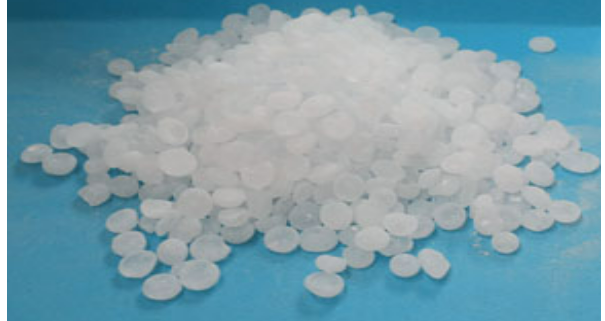Polyketone Resin
We mainly produce, export, and supply Polyketone Resin | aldehyd resin | ketone resin.All of these products have good compatibility in industries, especially in fields such as coatings, ink lubricants, etc. They are compatible with any solvents.After using our Polyacetal resin, its main function is to greatly improve the glossiness of coatings and inks. Its adhesion, surface hardness stability, as well as the improvement of pigment wettability and Solid content are all significantly helpful.
Specification of Polyacetal resin
Properties of Cyclohexanone-Formaldehyde resin
| Item | INTA81 | |
| Apperance | eye test | White or little yellowish beads or powder |
| softening temperature (ISO 4625-1:2004) | Degree Celcius | 90-105 |
| color number (ISO 4630-1:2004) | Hazen | ≤ 1 |
| acid value (ISO 2114-2000) | mg KOH/g | ≤3 |
| hydroxyl value(DIN 53240-2:1998) | mg KOH/g | 30-80 |
| Density(ISO1183-1:2004(E)B)
|
G/cm3 | 1.10±0.05 |
| Moisture content(ISO760:2000) | % | ≤1.0 |
And our professional products are non-toxic and light colored chemicals.
Polyketone Resin | aldehyd resin | ketone resin is a light yellow solid.
In addition to using these Polyketone Resin in some paper coatings, Juanzi series systems, and adhesives for hot melt adhesives, they are also widely used in some gravure and flexographic printing inks.
At the same time, these values can be widely applied to different types of polyurethane systems, such as painting indoor and outdoor floors and other applications in buildings.
These aldehyd resin are also widely used in necklace collections. Therefore, in printing inks, especially gravure or flexographic inks, they can improve glossiness and adhesion, their dryness and UV resistance, as well as increase their solid content, all of which have significant effects, At the same time, it can be mixed with pigments in paint coatings.
It is possible to produce color paste with a pigment content of 30-40%, but in some content systems, these Polyketone Resin can control its viscosity.
In addition to some conventional applications, our qualities can also be used to manufacture cellulose adhesives for negative systems, and it is also widely used in some leather applications.
If you have special requirements for adhesion, such as solving the adhesion of some paper, some PP, PVC and other substrates, you can use our quality and improve the fluidity and adhesion of some ink, which is also widely used in some food packaging inks.
Our quality has also increased significantly in terms of water resistance, heat resistance, and corrosion resistance. For this reason, it is widely used in indoor and outdoor flooring, as well as in some rooftop floors.
If you apply our Polyketone Resin to paint coatings, their function is to quickly dry, enhance their hardness and glossiness, and greatly improve their film-forming properties.
Aldehyde and ketone resins are soluble in most solvents commonly used in inks and coatings, such as benzene, alcohols, ketones, esters, ethers and their mixed solvents.
How to use Polyacetal resin
1. Use a solvent (xylene, ethanol, cyclohexanone, etc.) to dissolve it in a ratio of 1:1 and use it directly.
2. Dissolve in mixed solvent and use directly.
3. Use directly after heating to dissolve.
4. Dissolve with feasible monomer and use directly.
Usage of Polyketone Resin
In some solvent based coatings, such as repair paint for cars, motorcycle paint, and bicycle paint, this quality is used to increase hardness, yellowing resistance, and weather resistance. We suggest that you use an addition amount between 2% and 5%.
In some small machines, such as nitrocellulose coatings, it also has some of the above advantages. In addition to these, it has added some, such as increasing glossiness and flexibility.
It can replace nitrocellulose, and it is recommended to use an addition amount between 20% and 30%. These are our suggestions, and you can draw the final conclusion based on your experimental results.
In some Alkyd coatings, in order to reduce its viscosity and make India more visible, the glossiness can be well displayed. We suggest that you use our Polyketone Resin instead of Alkyd resin, so the addition amount is usually between 5% and 8%.

